Complete Solutions to Exercise 3.2 of chapter ELECTROMAGNETIC INDUCTION of Class 12 book with complete answers and questions
| Class 12 | PHYSICS |
| Chapter | ELECTROMAGNETIC INDUCTION |
| CENGAGE PHYSICS | Exercise 3.2 |
| Number Of Questions | 27 |
| Academic Year | 2023-24 |
Shows a long current carrying wire and two rectangular loops moving with of velocity `v`. Find the direction of current in each loop.
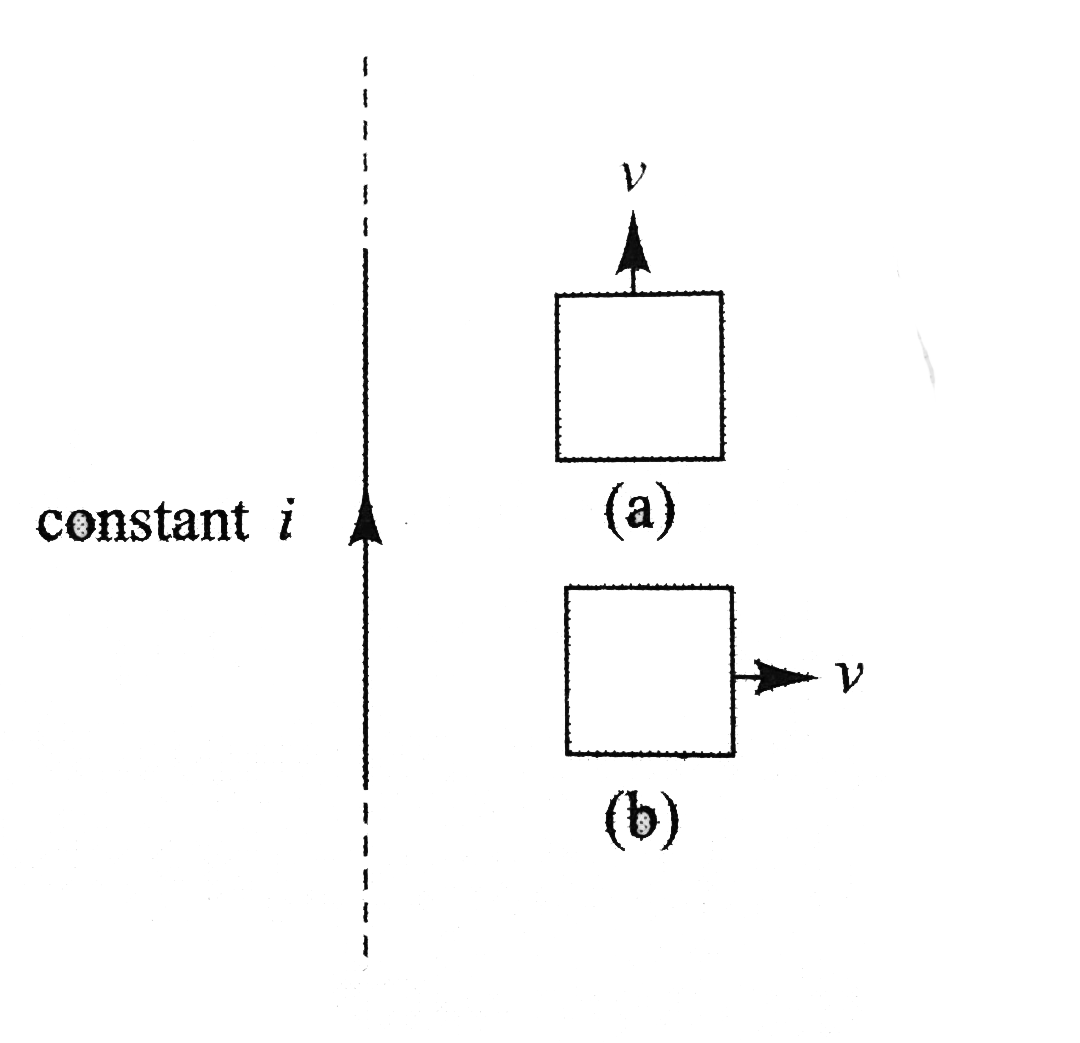
View SolutionA rod of length `l` is moving velocity `v` "in magnetic field" `b` as seen in . Find the emf induced in all three cases.
(a)
View SolutionShows a closed coil `ABCL` moving in a uniform magnetic field `B` with a velocity `v`.
Find
(a) emf induced in the coil.
(b) emf induced in curve part `ACB` and straight `AB``
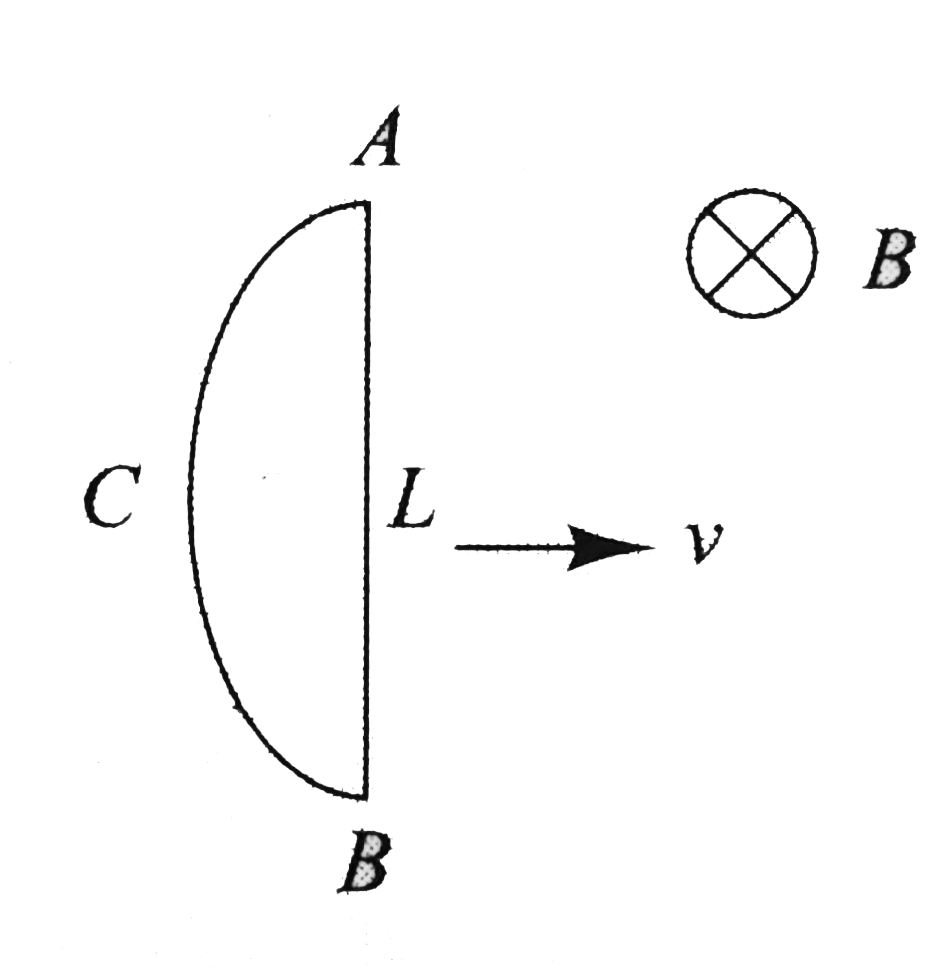
View SolutionShows an irregular shaped wire `AB` moving with velocity `v`. Find the emf induced in the wire.
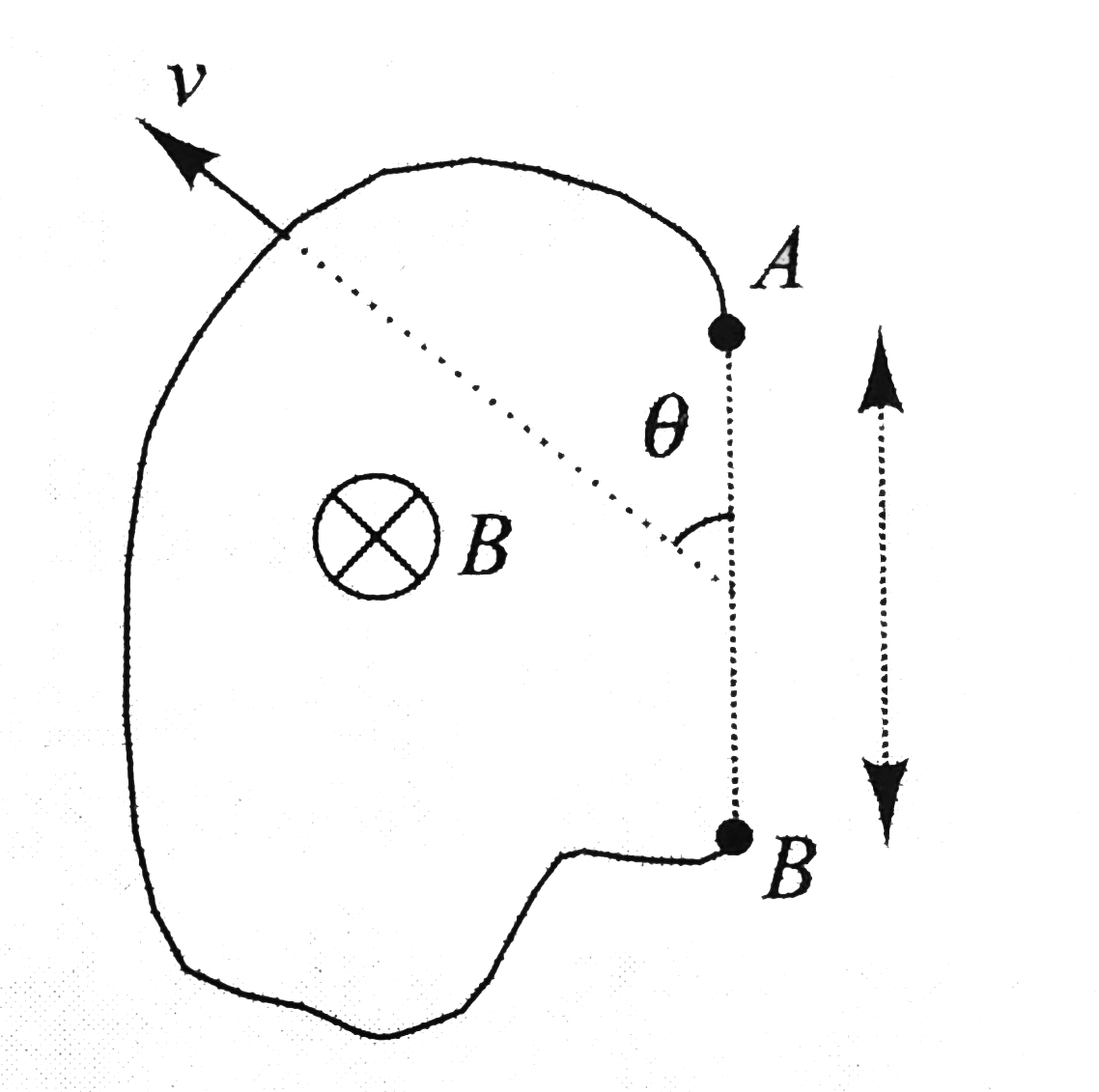
View SolutionFind the emf across points `P` and `Q` which are diametrically opposite points of a semicircular closed loop moving in a magnetic field as shown in .
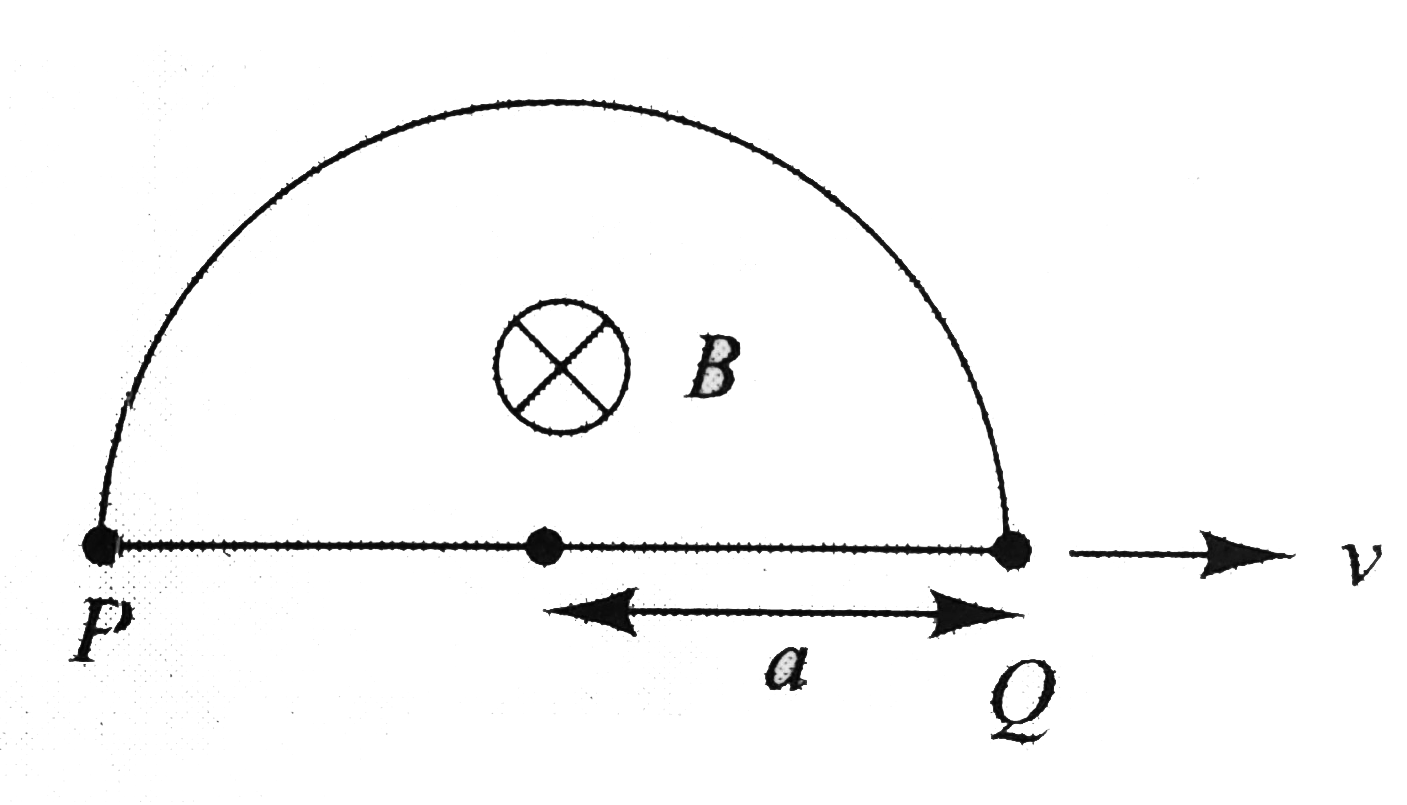
View SolutionFind the emf across points `P` and `Q` which are diametrically opposite points a semicircular closed loop moving in a magnetic field as shown in . Also draw the electrical equivalence od each branch.
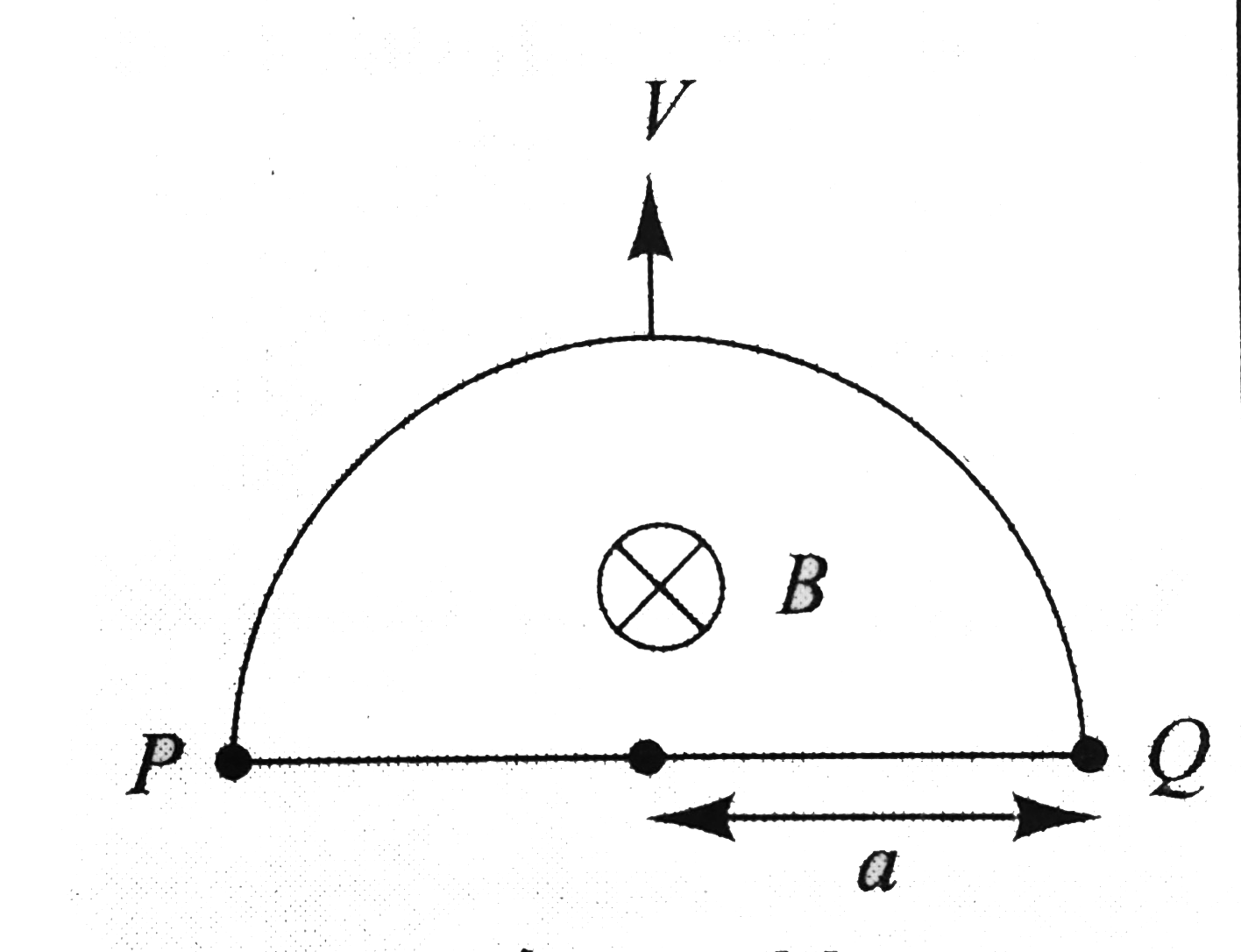
View SolutionShows a rectangular loop moving in a uniform magnetic equivalence of each branch. What is the net induced emf.
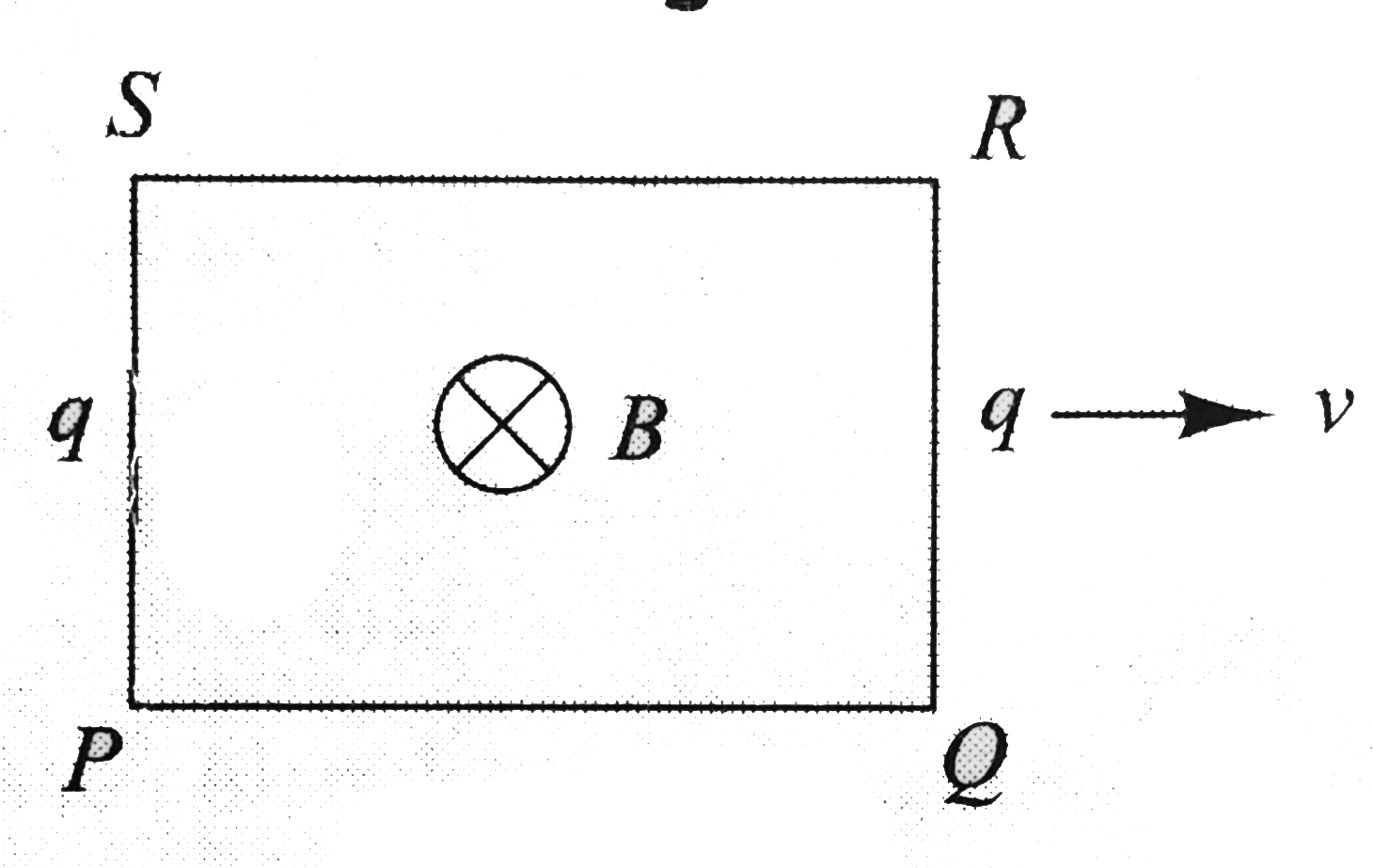
View SolutionShows a rod of length `l` and resistance `r` moving on two rails shorted by a resistance `R`. A uniform magnetic field `B` is present normal to the plane of rod and rails. Show the electrical equivalence of each branch.
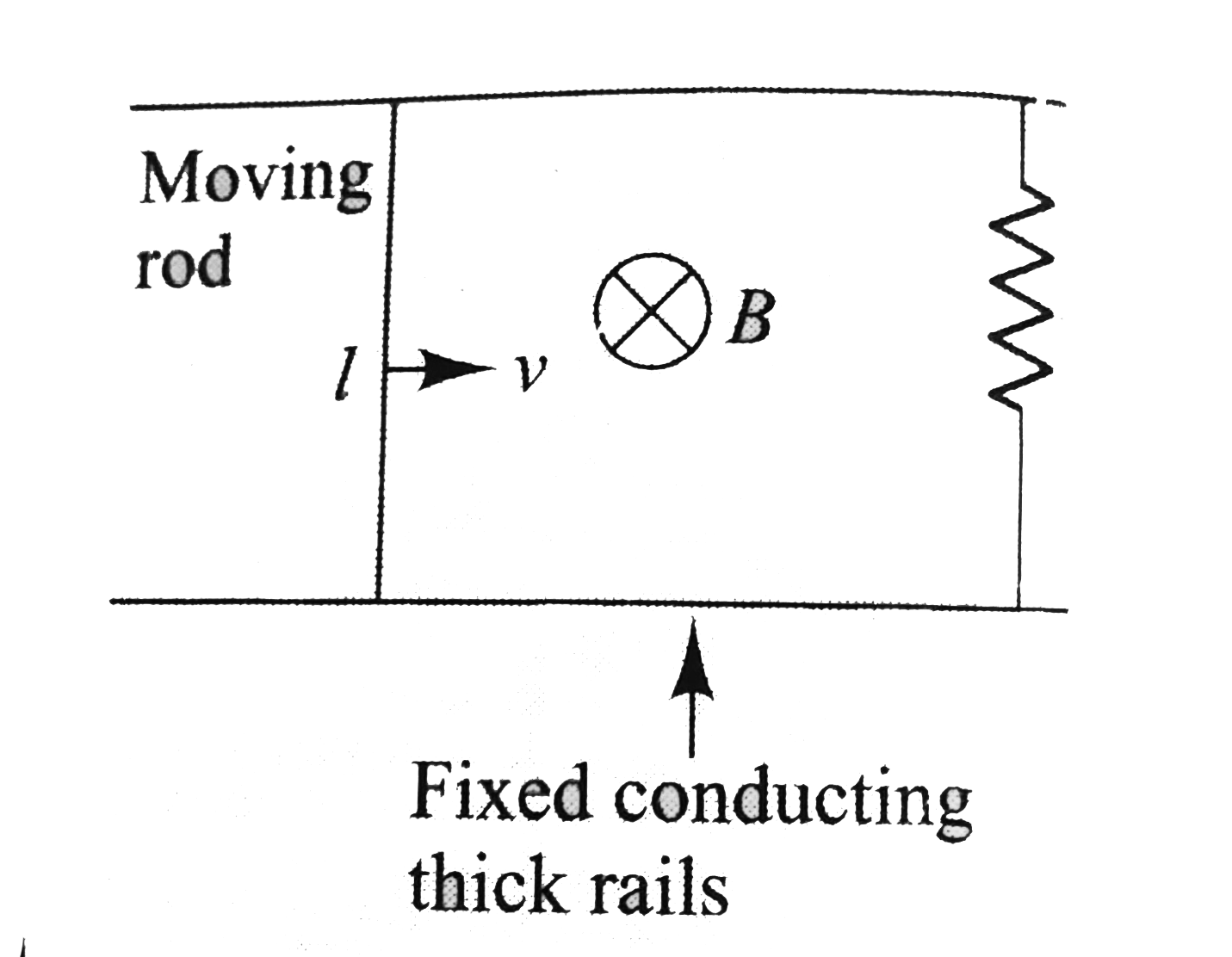
View SolutionA rod of length `l` is kept parallel to a long wire carrying constant current `i` . It is moving away from the wire with a velocity `v`. Find the emf induced in the wire when its distance in the wire when its distance from the long wire is `x`.
View SolutionAn infinitely long wire is placed near a square loop as shown in figure. Choose the correct options.
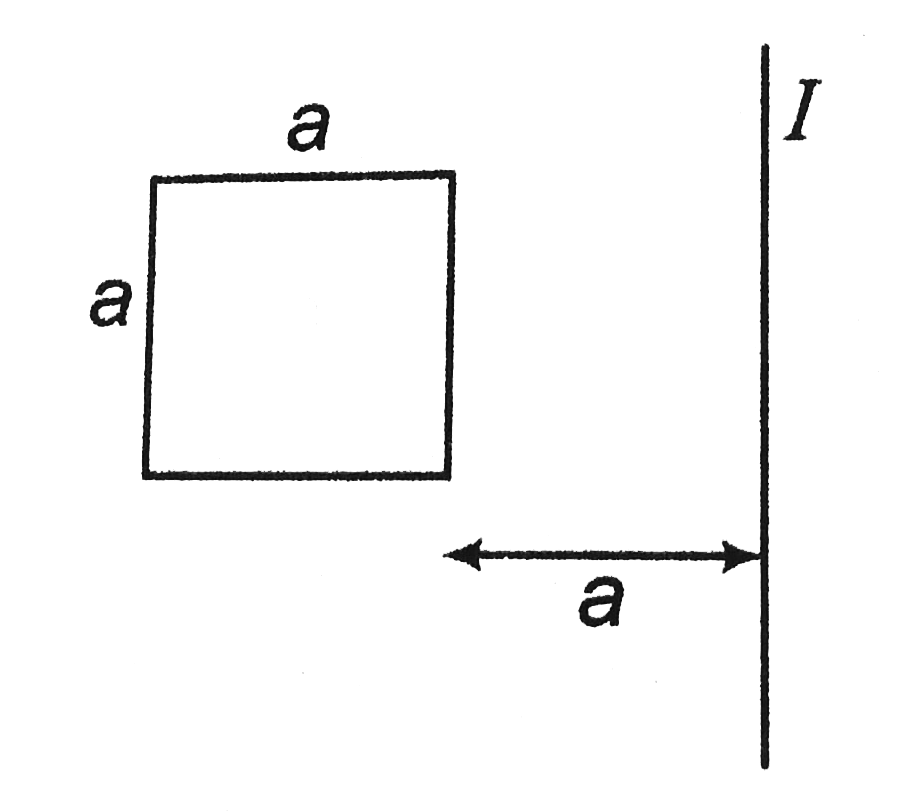
View SolutionA rod of length `l` is placed perpendicular to a long wire carrying current `i`. The rod is moved parallel to the wire with a velocity `v`. Find the emf induced in the rod, if its nearest end is at a distance a from the wire.
View SolutionA rectangular loop is moving parallel to a long wire carrying current `i` with a velocity `v`. Find the emf induced in the loop (Fig. 3.68) if its nearest end is at a distance a from the wire. Draw equivalent electrical diagram.
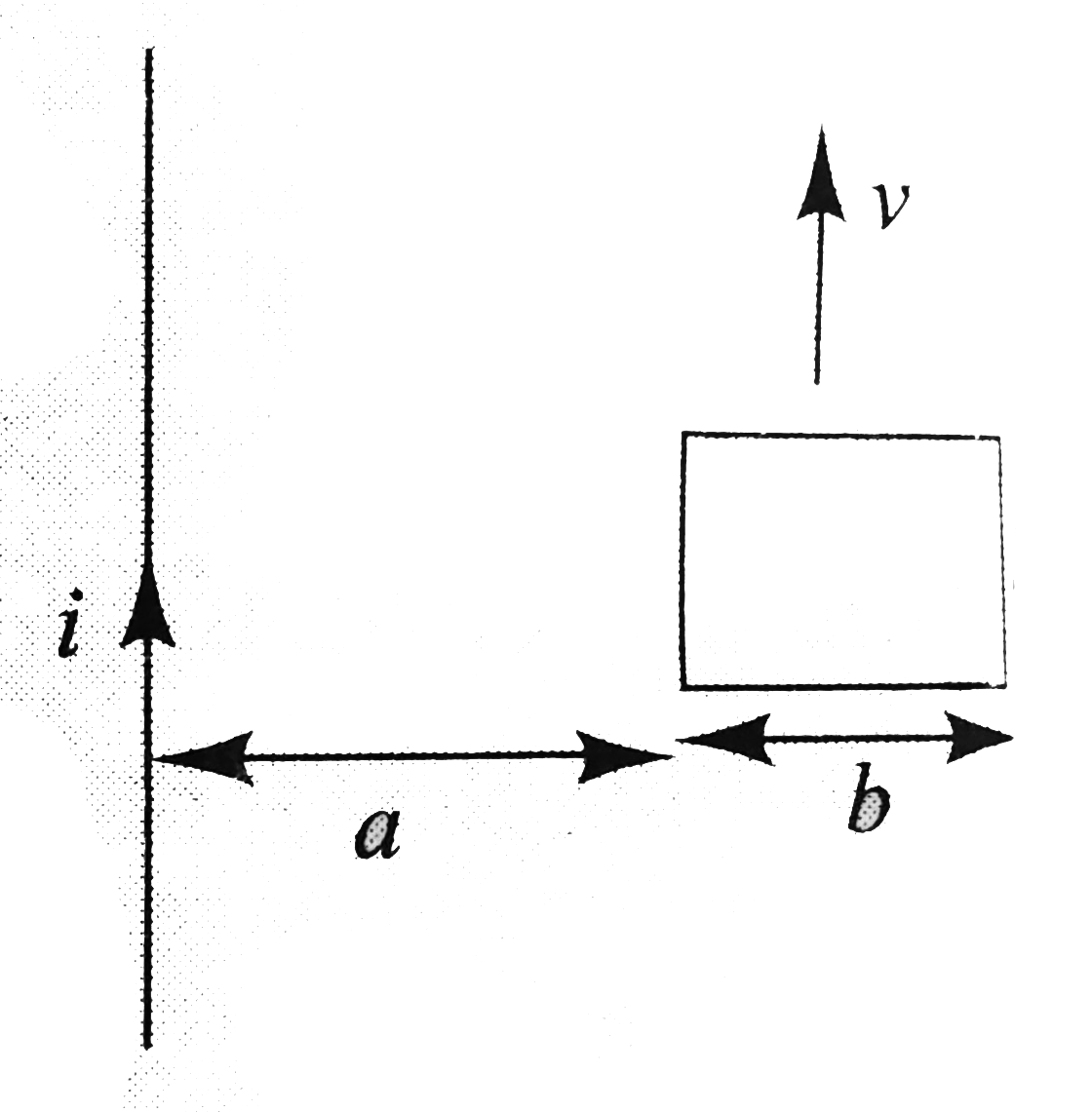
View SolutionRod `PQ` of length `2l` is rotating about one end `P` in a uniform magnetic field `B` which is perpendicular to the plane of rotation of the rod . Point `M` is the mid- point of the rod. Find the induced emf between `M` and `Q` if the potential between `P` and `Q` is `100 V`.

View SolutionRod `PQ` of length `2l` is rotating about its midpoint `C` in a uniform magnetic field `B` which is perpendicular to the plane of rotation of the rod . Find the induced emf between `PQ` and `PC`. Draw the circuit diagram of parts `PC` and `CQ`.
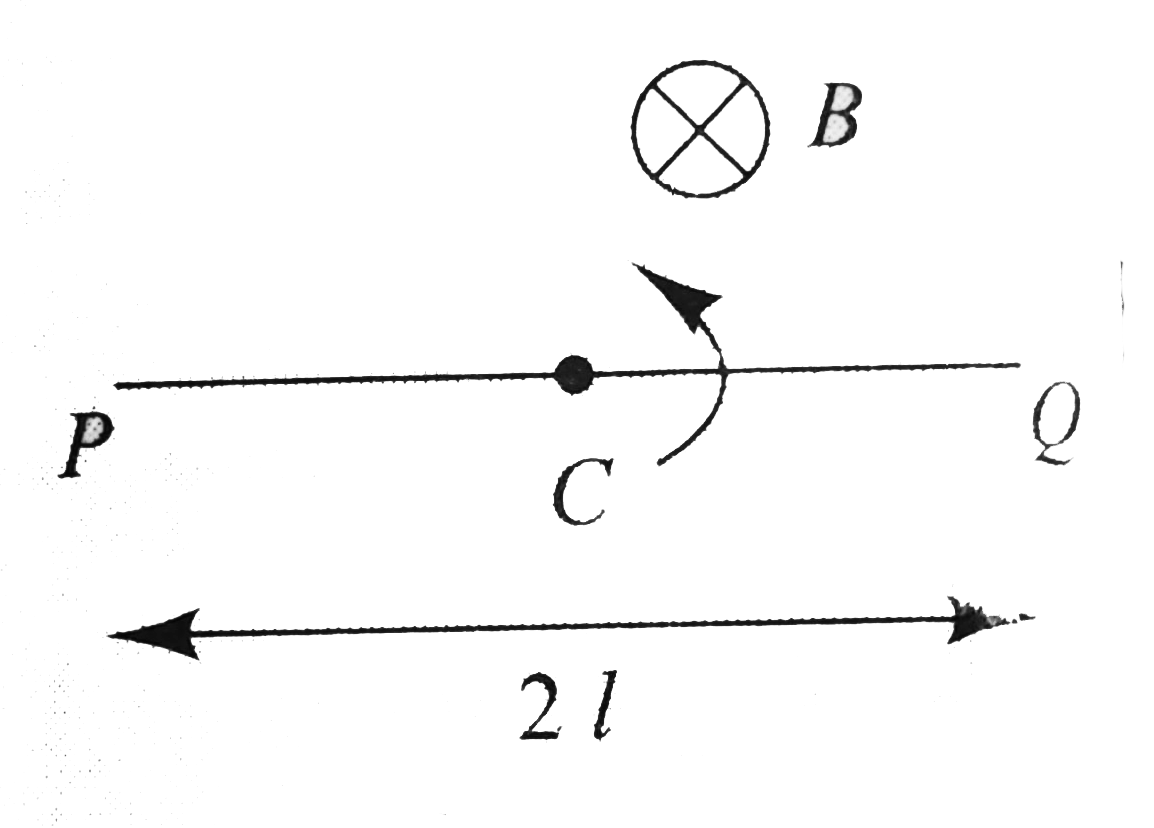
View SolutionA rod of length `L` and resistance `r` rotates about one end as shown in . Its other end touches a conducting ring of negligible resistence. A resistence `R` is connected between the center and periphery. Draw the electrical equivalence and find the current in resistance `R`. There is a uniform magnetic field `B` directed as shown in .

View SolutionSolve problem `15` if the length of rod is `2L` and resistance `2r` and it is rotating about its center. Both ends of the rod now touch the conducting ring.
View SolutionA rod of length `l` is rotating with an angular speed `omega` about one of its ends which is at a distance a from an infinitely long wire carrying current `i`. Find the emf induecd in the rod at the instanr shown in .
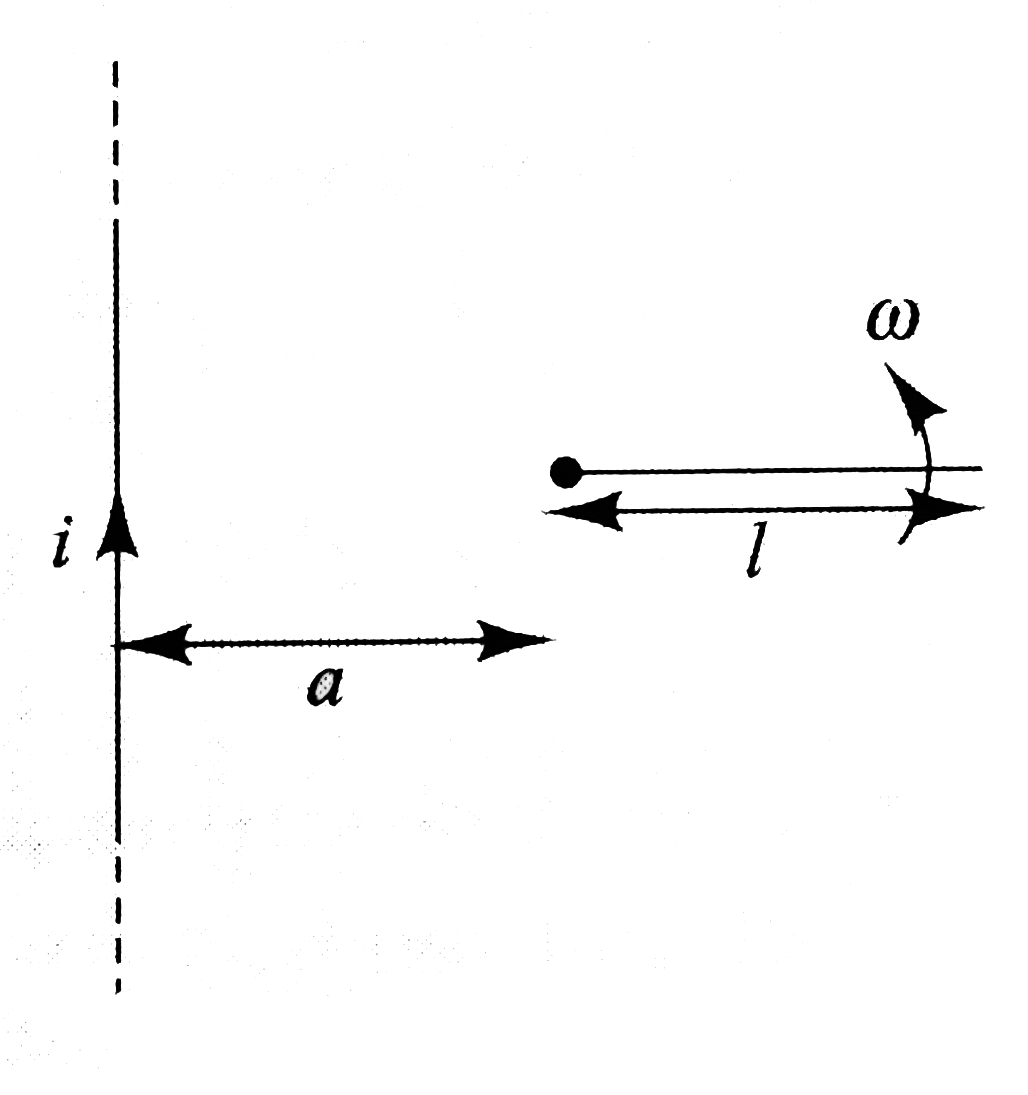
View SolutionA rod of length `l` is rotating with an angular speed `omega` about one of its ends which is at a distance a from an infinitely lonf wire carrying current `i`. Find the emf induced in the rod at the instant shown in .
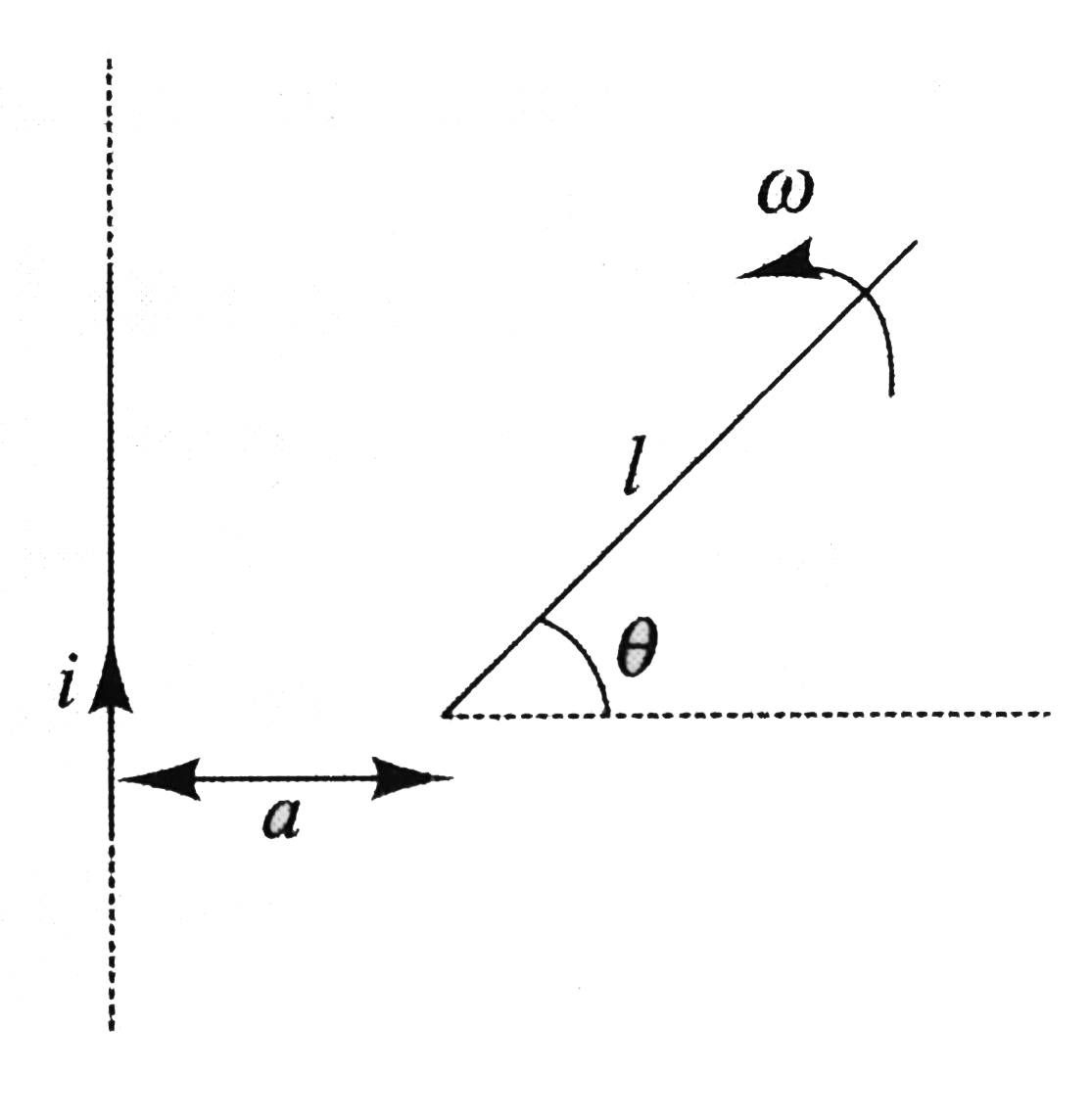
View SolutionShows rod `PQ` of mass `m` and resistance `r` moving on two fixed, resistanceless, smooth conducting rails (closed on both sides by resistances `R_(1) and R_(2)`). Find the current in the rod (at the instant its velocity is `v`).
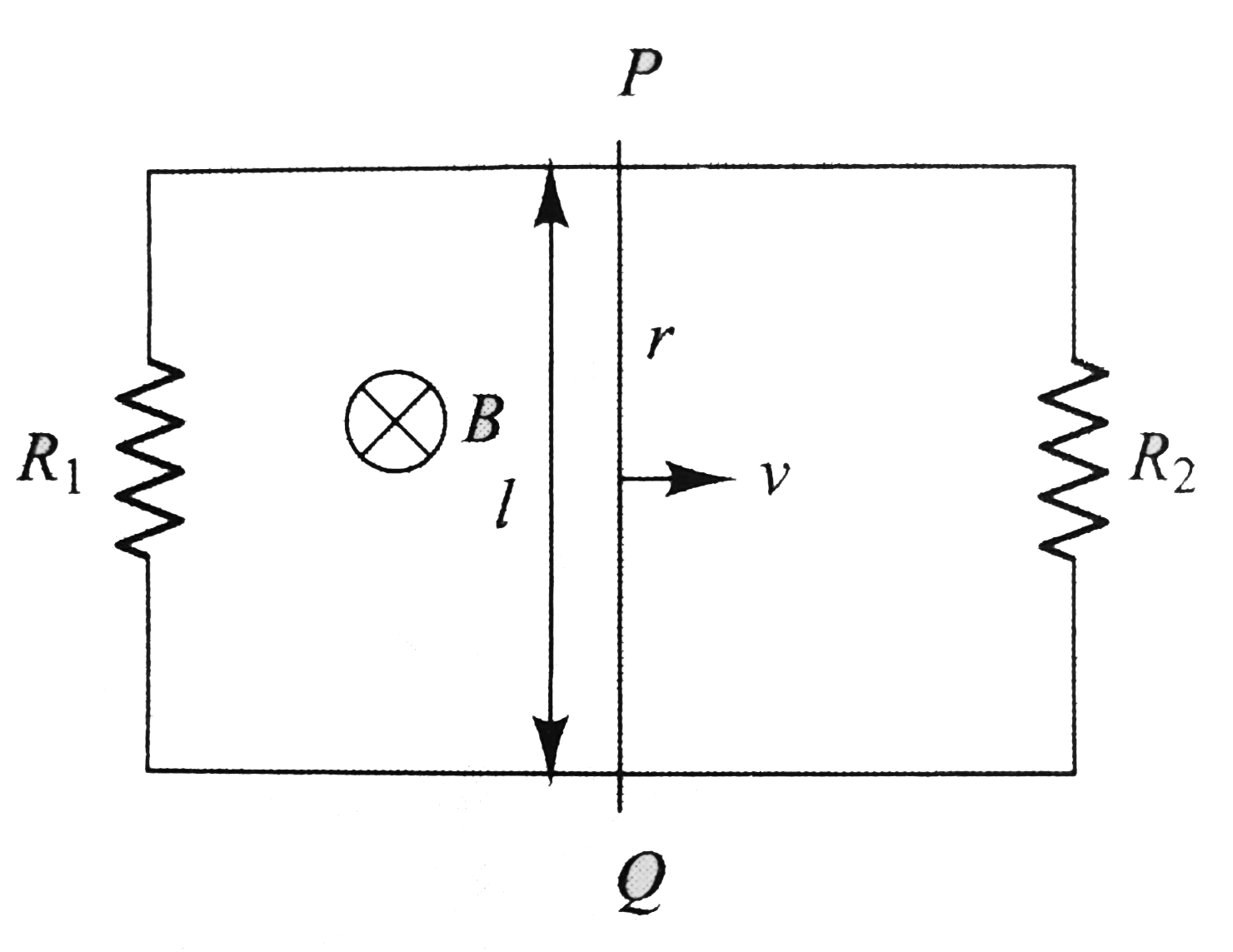
View SolutionA rod `PQ` of length `l` is rotating about end `P`, with an angular velocity `omega`. Due to electrifugal forceed the free electrons in the rod move toward the end `Q` and an emf is created.The Magnetic field B is uniform and into the page. Find the induced emf.
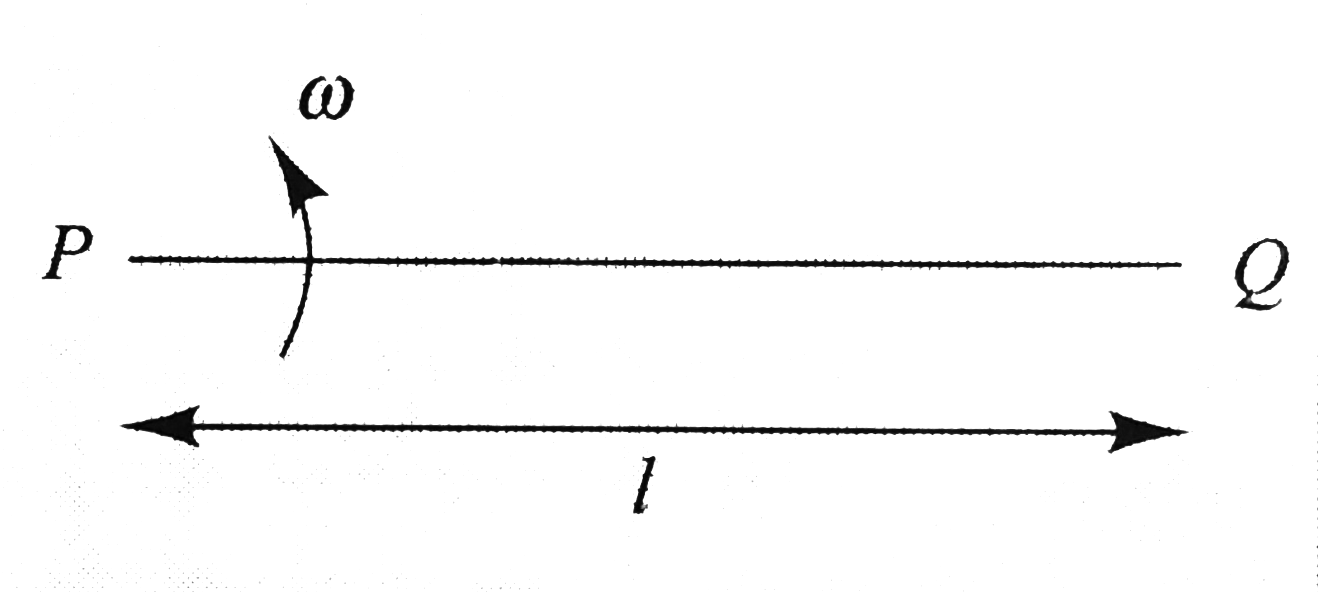
View SolutionA ring rotates with angular velocity `omega` about an axis perpendicula to the plane of the ring passing through the center of the ring (Fig. 3.77). A constant magnetic field `B` exists parallel to the axis. Find the emf induced in the ring.

View SolutionA ring rotates with angular velocity `omega` about an axis in the plane of the ring which passes through the center of the ring. A constant magnetic field `B` exists perpendicualr to the plane of the ring . Find the emf induced in the ring as a function of time.
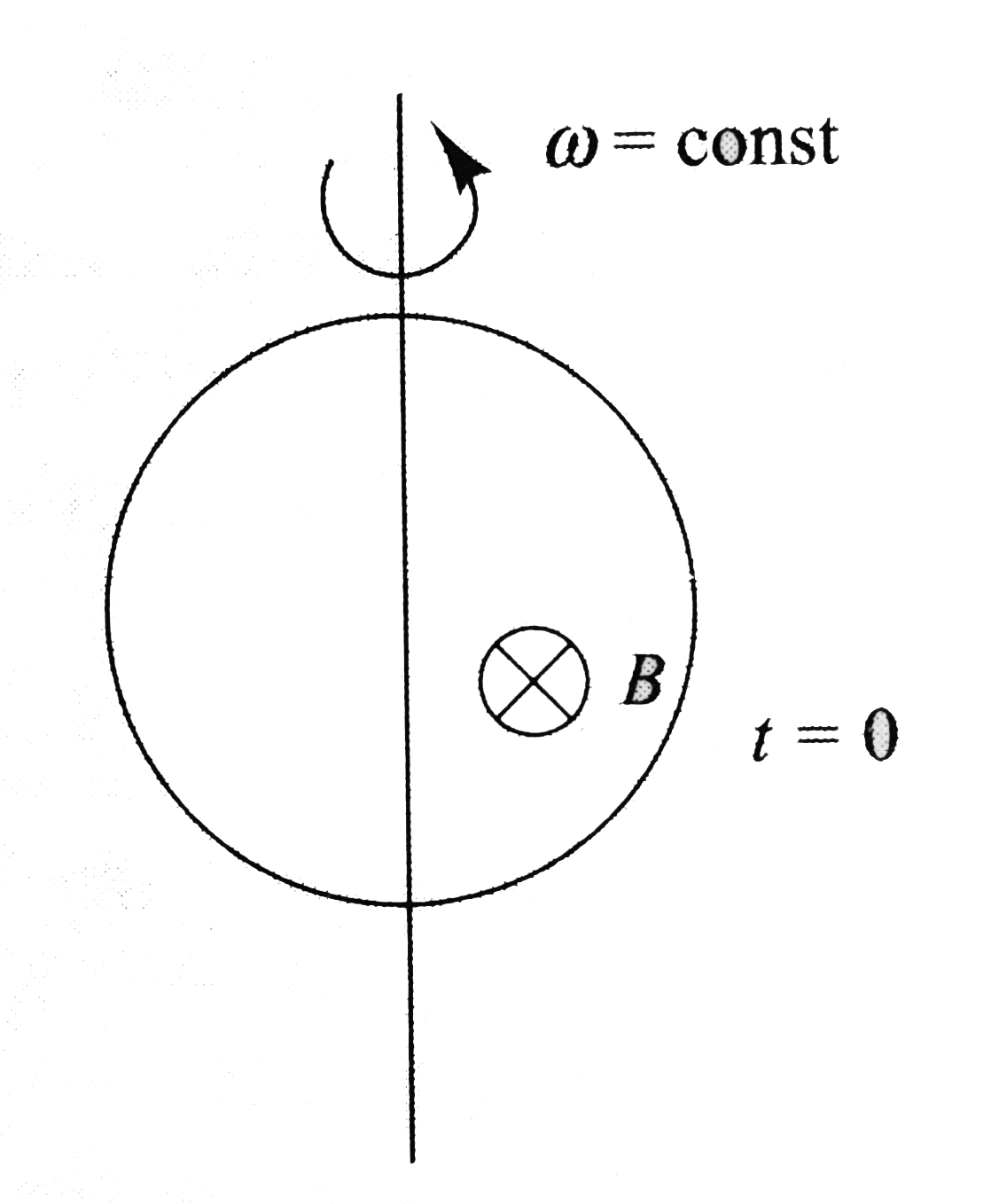
View SolutionA rod AB moves with a uniform velocity v in a uniform magnetic field as shown in figure
(##HCV_VOL2_C38_E01_033_Q01##)
View SolutionThe cube shown in, `50.0 cm` on a side, is in a uniform magnetic field of `0.120 T`, directed along the positive y-axis. Wires `A, C, and D` move in the direction indicated, each with a speed of `0.350 ms^(-1)`. (Wire `A` moves parallel to the x-y plane, `C` moves at an angle of `45.0^(@)` below the x-y plane, and `D` moves parallel to the x-z plane.) What is the potential difference between the ends of each wire?
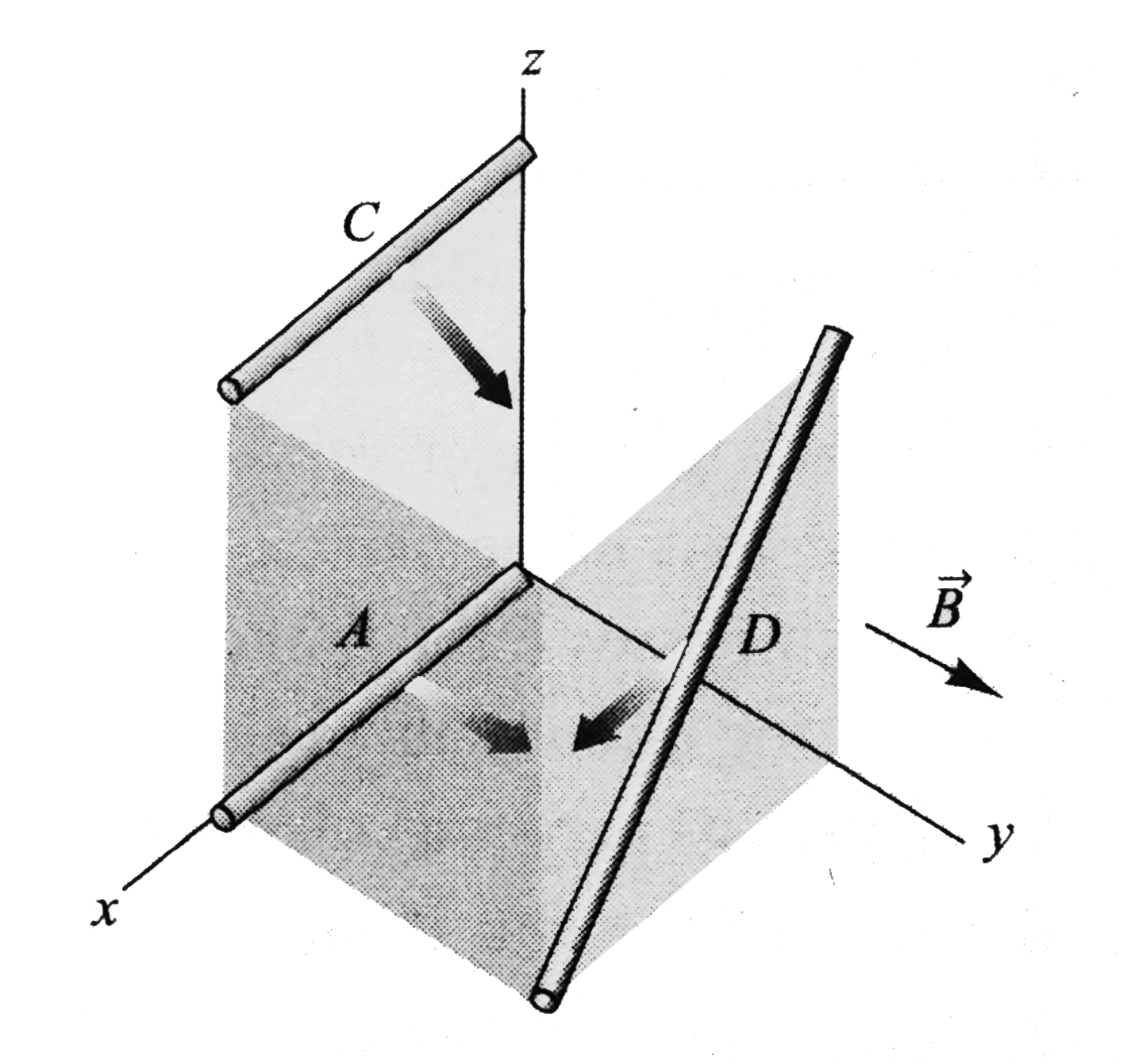
View SolutionA rod of mass `m`, length `l` and resistance `R` is sliding down on a smooth inclined parallel rails with a cinstant velocity `v`. If a uniform horizontal magnetic field `B` exists, then find thevalue of `B`.
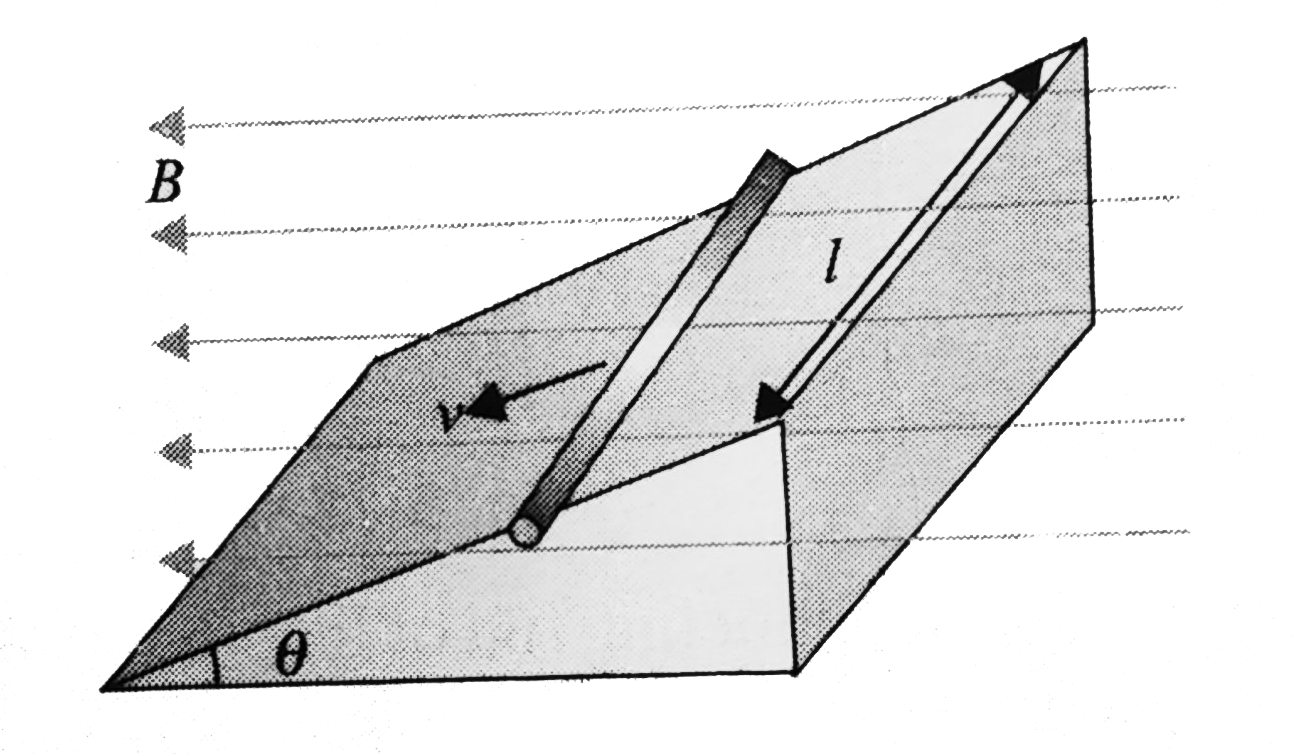
View SolutionA conducting rod AC of length 4l is rotated about a point O in a uniform mangnetic field B directed into the paper. AO = l and OC = 3l. Then,
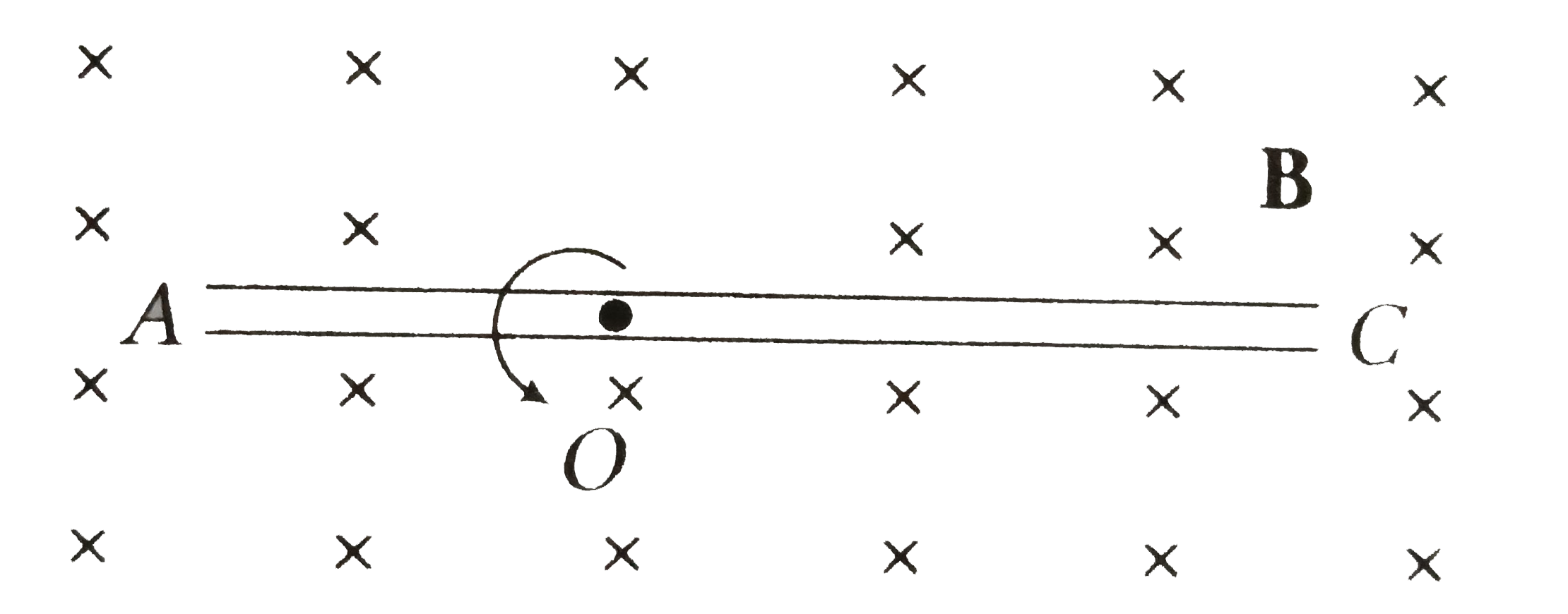
View SolutionConsider the sliding wire circuit shown in . The wire slides at constant speed and the plane of the circuit is perpendicular to a uniform magnetic field. Show that the induced emf is given by `E = Blv^(2)t//D` foe `0 lt t lt D//v` What is the expression for the emf for `t gt D//v`?
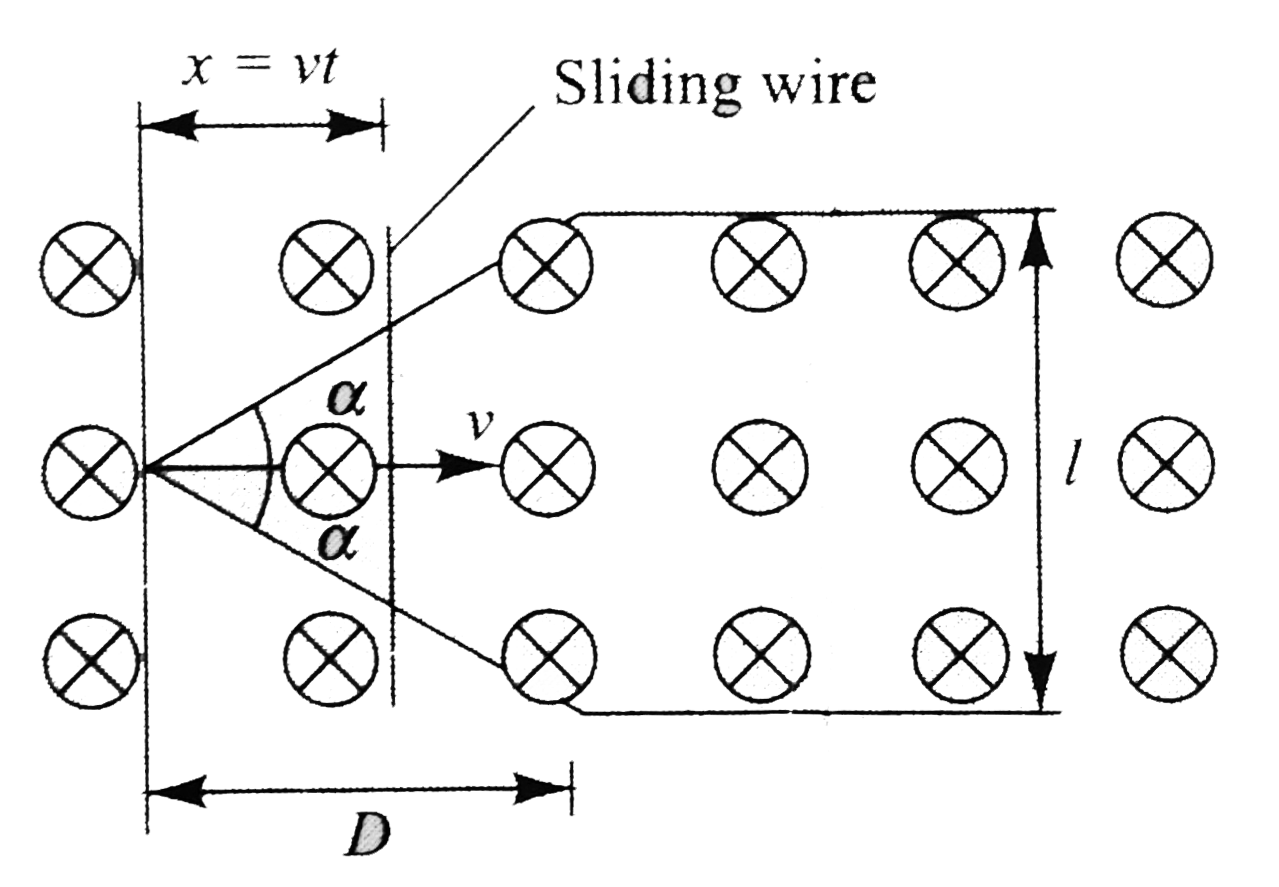
View Solution
Exercise 3.2 questions and complete solutions for chapter ELECTROMAGNETIC INDUCTION of CENGAGE PHYSICS (ENGLISH) of Class 12
All Exercises from CENGAGE PHYSICS Class 12 PHYSICS ELECTROMAGNETIC INDUCTION
- Archives Asserton - Reasoning
- Archives Fill In The Blanks
- Archives Multiple Correct
- Archives Single Correct
- comprehensive
- comprehensive type
- compression type
- Exercise 3.1
- Exercise 3.2
- Exercises Asserton - Reasoning
- Exercises Integer
- Exercises Linked Comprehension
- Exercises Multiple Correct
- Exercises Single Correct
- Exercises Subjective
- Illustration
- Multiple correct Answer Type
- single correct
- single correct
- single correct answer
- Single Correct Answer Type
- Solved Example